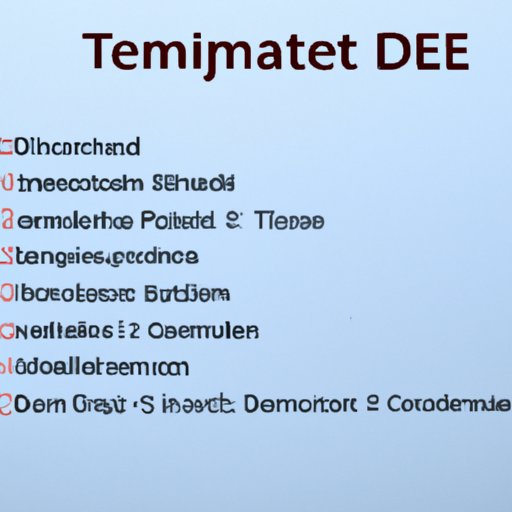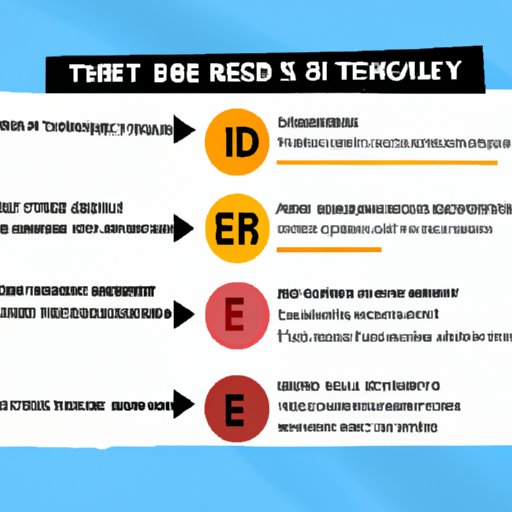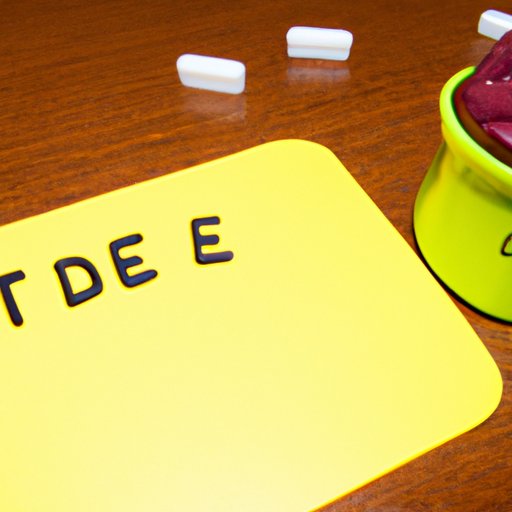Introduction
Total Daily Energy Expenditure (TDEE) is an important concept to understand when it comes to nutrition and fitness. TDEE is the total amount of energy your body needs in a day and can vary depending on your activity level. Understanding your TDEE can help you optimize your nutrition and reach your fitness goals.

The Basics of TDEE and the Role it Plays in Nutrition
TDEE is the amount of energy that your body needs to function in a day and is calculated by taking into account your basal metabolic rate (BMR), activity level, and the thermic effect of food (TEF). BMR is the amount of energy your body needs to sustain basic functions like breathing and digestion, while TEF is the amount of energy your body needs to digest and process food.
Knowing your TDEE can help you understand how much energy you need to fuel your body and how much food you should be consuming in order to meet your nutritional needs. It can also help you determine whether or not you are eating enough to reach your fitness goals. For example, if you are trying to lose weight, you will need to consume fewer calories than your TDEE in order to create a caloric deficit.
Understanding TDEE: A Guide to Calculating Your Total Daily Energy Expenditure
Calculating your TDEE is relatively simple and there are several tools available to help you get started. The most common methods for calculating TDEE involve using formulas or online calculators that take into account your age, gender, height, weight, and activity level. These tools are generally accurate but may not take into account individual differences such as metabolism.
Another way to calculate your TDEE is to track your daily activities and meals for a week and then compare the results to your average calorie intake. This method is more time-consuming but can provide more accurate results. Tracking your TDEE can also help you identify which activities and foods have the most impact on your calorie intake.
How to Use TDEE to Optimize Your Nutritional Intake
Once you know your TDEE, you can use it to optimize your diet and make sure you’re getting the right balance of nutrients. For example, if you want to gain muscle, you’ll need to consume more protein and carbohydrates than if you were trying to lose weight. You can also use your TDEE to make sure you’re eating enough calories to meet your energy needs without overdoing it.
You can also use your TDEE to adjust your calorie intake based on your activity level. If you’re exercising more than usual, you’ll need to consume more calories to make up for the extra energy you’re burning. On the other hand, if you’re less active, you’ll need to reduce your calorie intake in order to maintain a healthy weight.

The Benefits of Knowing Your TDEE and How It Can Help You Reach Your Fitness Goals
Knowing your TDEE can help you reach your fitness goals by giving you a better understanding of how many calories you need to consume in order to achieve your desired outcome. For example, if you’re trying to lose weight, you’ll need to create a calorie deficit by consuming fewer calories than your TDEE. On the other hand, if you’re trying to build muscle, you’ll need to consume more calories than your TDEE in order to fuel your workouts.
Tracking your TDEE can also help you identify areas where you can make changes to your diet to improve your results. For example, if you’re trying to lose weight but not seeing any progress, tracking your TDEE can help you identify how many calories you’re actually consuming versus how many you think you’re consuming. This can help you make adjustments to your diet and reach your goals faster.

Using TDEE to Monitor Your Diet and Improve Your Nutrition
Tracking your TDEE can also be a useful tool for monitoring your diet and making sure you’re getting the right balance of nutrients. For example, if you’re trying to eat a balanced diet, tracking your TDEE can help you identify which foods are providing you with the most beneficial nutrients. This can help you make more informed food choices and make sure you’re getting the nutrients your body needs.
Tracking your TDEE can also help you identify areas where you can make changes to your diet to improve your overall health. For example, if you’re consuming too many processed or sugary foods, tracking your TDEE can help you identify these foods and make changes to your diet to ensure you’re getting the right balance of nutrients.
Unlocking the Secrets of TDEE: What You Need to Know About Total Daily Energy Expenditure
TDEE is an important concept to understand when it comes to nutrition and fitness. By understanding your TDEE, you can optimize your diet and make sure you’re getting the right balance of nutrients. You can also use your TDEE to monitor your diet and make changes to improve your overall health. Finally, knowing your TDEE can help you reach your fitness goals by giving you an idea of how many calories you need to consume in order to achieve them.
In conclusion, TDEE is an essential tool for understanding your body’s energy needs and optimizing your nutrition. By calculating your TDEE, tracking your diet, and making informed food choices, you can reach your fitness goals and improve your overall health.
Conclusion
Total Daily Energy Expenditure (TDEE) is an important concept to understand when it comes to nutrition and fitness. Knowing your TDEE can help you optimize your diet, monitor your nutritional intake, and reach your fitness goals. By understanding your TDEE, you can make informed decisions about your diet and improve your overall health.
We hope this article has helped give you a better understanding of TDEE and how it can be used to improve your nutrition and reach your fitness goals. Now that you understand the basics of TDEE, you can start using it to make informed decisions about your diet and take control of your health.
(Note: Is this article not meeting your expectations? Do you have knowledge or insights to share? Unlock new opportunities and expand your reach by joining our authors team. Click Registration to join us and share your expertise with our readers.)
